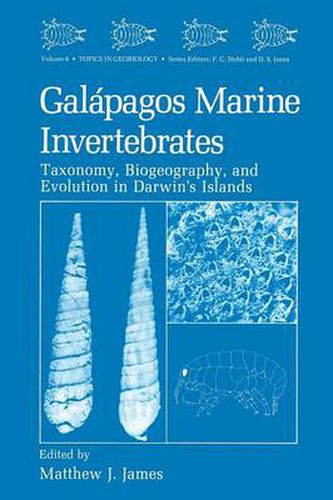Readings Newsletter
Become a Readings Member to make your shopping experience even easier.
Sign in or sign up for free!
You’re not far away from qualifying for FREE standard shipping within Australia
You’ve qualified for FREE standard shipping within Australia
The cart is loading…






This title is printed to order. This book may have been self-published. If so, we cannot guarantee the quality of the content. In the main most books will have gone through the editing process however some may not. We therefore suggest that you be aware of this before ordering this book. If in doubt check either the author or publisher’s details as we are unable to accept any returns unless they are faulty. Please contact us if you have any questions.
Marine Invertebrate Evolution in the Galapagos Islands MATTHEW J. JAMES 1. Perspective of This Volume … … … … … … … … … … … … … … … … … … … … . 1 2. Directions for Future Research … … … … … … … … … … … … … … … … … … … . 2 3. Plan of This Volume … … … … … … … … … … … … … … … … … … … … … … . 2 1. Perspective of This Volume Charles Darwin brought the Galapagos Islands to the attention of zoologists, botanists, and geologists following the six-week visit of H. M. S. Beagle to the islands in 1835. Since then published research on the biota of the islands, partic ularly in multiauthored volumes, has focused on terrestrial plants and animals. The present volume is designed specifically to provide a summary of work on the marine invertebrate fauna. One deviation from that objective was the inclusion of a chapter on land snails, which proved to be a good choice because the phylum Mollusca is now covered more thoroughly in this volume than in any single previous scholarly work on the Galapagos. The academic bottom line with this book is to elucidate the evolutionary responses of shallow water, benthic marine invertebrates to the unique set of insular conditions that exist in the Galapagos Islands. The route taken to that objective has many paths including taxonomic revision, determining biogeo graphic affinities, and examining the ecological requirements of species. The information presented here is for some groups from the islands the first stage in a thorough process that can eventually lead to an understanding of the phylogenetic relationships of these species.
$9.00 standard shipping within Australia
FREE standard shipping within Australia for orders over $100.00
Express & International shipping calculated at checkout
This title is printed to order. This book may have been self-published. If so, we cannot guarantee the quality of the content. In the main most books will have gone through the editing process however some may not. We therefore suggest that you be aware of this before ordering this book. If in doubt check either the author or publisher’s details as we are unable to accept any returns unless they are faulty. Please contact us if you have any questions.
Marine Invertebrate Evolution in the Galapagos Islands MATTHEW J. JAMES 1. Perspective of This Volume … … … … … … … … … … … … … … … … … … … … . 1 2. Directions for Future Research … … … … … … … … … … … … … … … … … … … . 2 3. Plan of This Volume … … … … … … … … … … … … … … … … … … … … … … . 2 1. Perspective of This Volume Charles Darwin brought the Galapagos Islands to the attention of zoologists, botanists, and geologists following the six-week visit of H. M. S. Beagle to the islands in 1835. Since then published research on the biota of the islands, partic ularly in multiauthored volumes, has focused on terrestrial plants and animals. The present volume is designed specifically to provide a summary of work on the marine invertebrate fauna. One deviation from that objective was the inclusion of a chapter on land snails, which proved to be a good choice because the phylum Mollusca is now covered more thoroughly in this volume than in any single previous scholarly work on the Galapagos. The academic bottom line with this book is to elucidate the evolutionary responses of shallow water, benthic marine invertebrates to the unique set of insular conditions that exist in the Galapagos Islands. The route taken to that objective has many paths including taxonomic revision, determining biogeo graphic affinities, and examining the ecological requirements of species. The information presented here is for some groups from the islands the first stage in a thorough process that can eventually lead to an understanding of the phylogenetic relationships of these species.